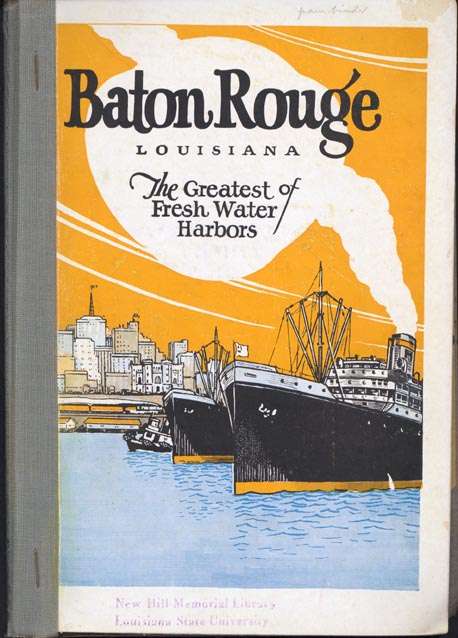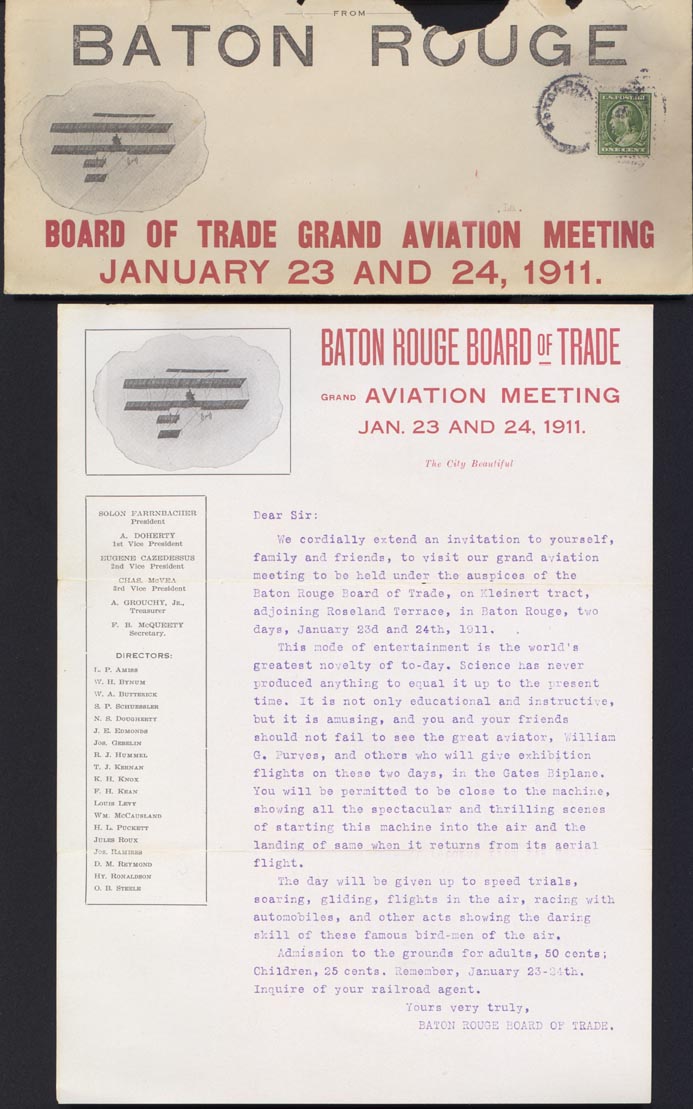
Case 5: Transportation and Progress
Baton Rouge has been a port city since its beginning. Author Charles East states that the Baton Rouge story goes from an "Indian site on the banks of the river to the booming commercial and industrial city of the [eighteen-] nineties a city shaped by innumerable twists and turns of history, but perhaps by none more crucial than Standard Oil's decision to build a refinery here in the early 1900s." The petrochemical industry has dominated the banks of the Mississippi River since 1909, when the Standard Oil Company opened its refinery in Baton Rouge.
In the 1920s, the city was known as the "greatest of fresh water harbors." Ships docked at the foot of Third Street until 1926, when the Baton Rouge Municipal Dock was completed at a cost of $550,000. The dock was located where the Mississippi River Bridge meets the eastern shore.
Limited rail transport came close to Baton Rouge in 1857. Private subscriptions and a $50,000 bonus from the city of Baton Rouge paid for the construction of the Baton Rouge, Grosse Tete, and Opelousas Railroad to serve the large sugar plantations west of the river. The rails ran only from Port Allen to Grosse Tete. Despite the issuance of stock certificates in 1867, the railroad did not survive the Civil War. Southern Pacific purchased its rails and rolling stock and took them away for use elsewhere.
In 1883 prosperity returned to Baton Rouge with the establishment of the New Orleans & Mississippi Valley Railroad, which connected the city to New Orleans. By 1940 Baton Rouge was connected by rail to all parts of the country.
Although Baton Rouge is still a railroad town, highways have gradually replaced the railroad as carriers of people and freight. Not until 1940, however, was a bridge built across the Mississippi River at Baton Rouge. The combined highway and railroad bridge, started in 1937, cost $10 million and is 2.5 miles long. It was only the second bridge in the state to cross the Mississippi; the first was in New Orleans. In the 1960s construction began on a "new" Mississippi River bridge to connect Interstate Highways 10 and 110. Now one of the busiest interstate highways in the nation, I-10 dominates transit in the city.
An invitation to the Grand Aviation Meeting in 1911 sponsored by the Baton Rouge Board of Trade shows a group determined to bring the latest technology to Baton Rouge. From 1911 to 1941 only private planes flew in or out of the city. World War II brought the construction of Harding Field, a fighter-training base north of town. When the war ended, the city took possession of the airbase, which became a commercial facility renamed Ryan Airport. Today it is known as the Baton Rouge Metropolitan Airport and is serviced by four carriers.
Items Displayed:
Items listed below were part of the exhibition but some are not pictured on this page.
Standard Oil Postcard. LLMVC, Baton Rouge Postcards Picture Collection
Esso Standard Oil Company. The Story of the Baton Rouge Refinery . Baton Rouge, LA: The Company, [1948?] LLMVC HD9569 E7 E78.



Jasper Ewing, Photograph "Third Street," (1940s?). LLMVC, Jasper Ewing Photographs.
